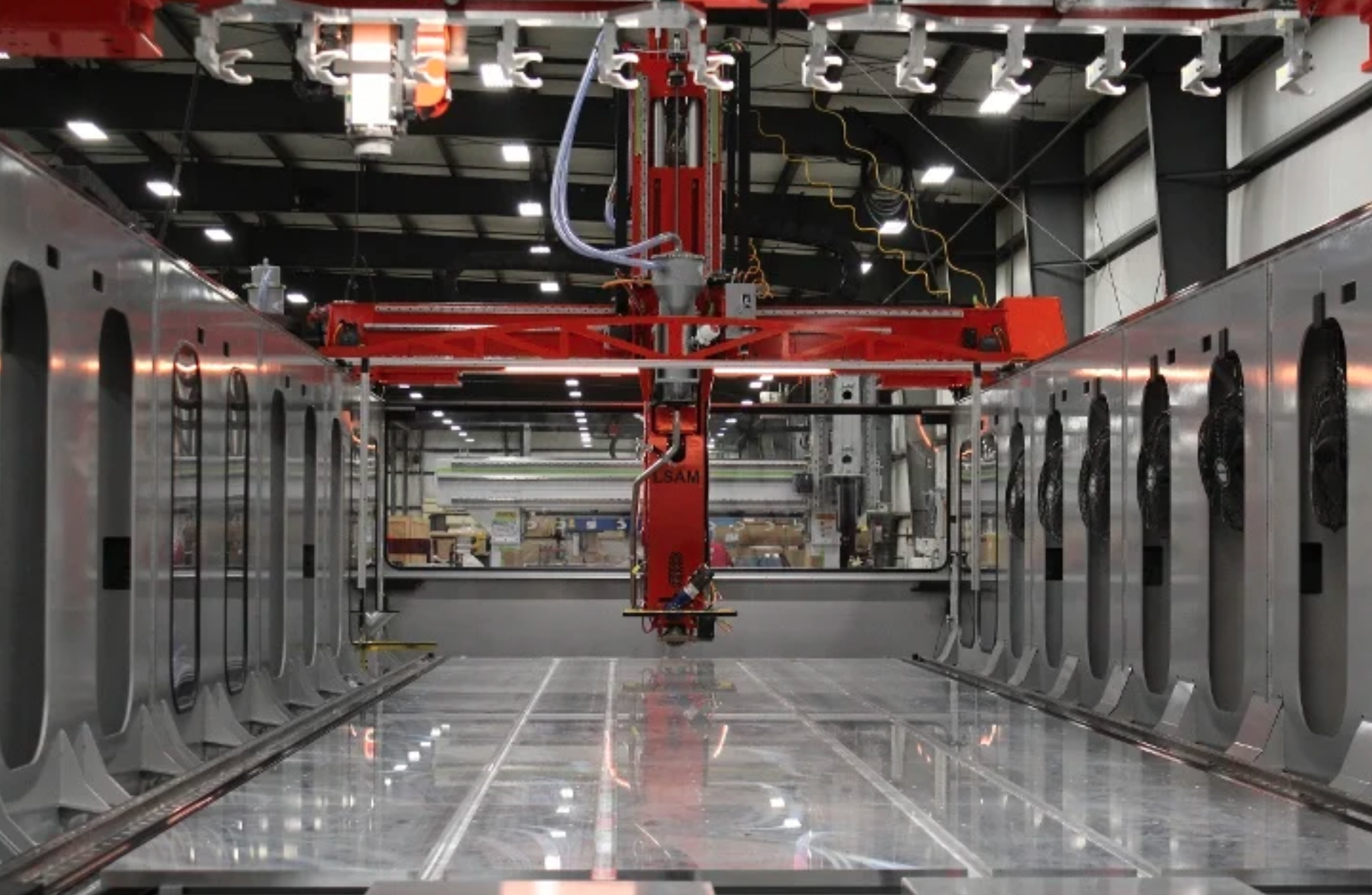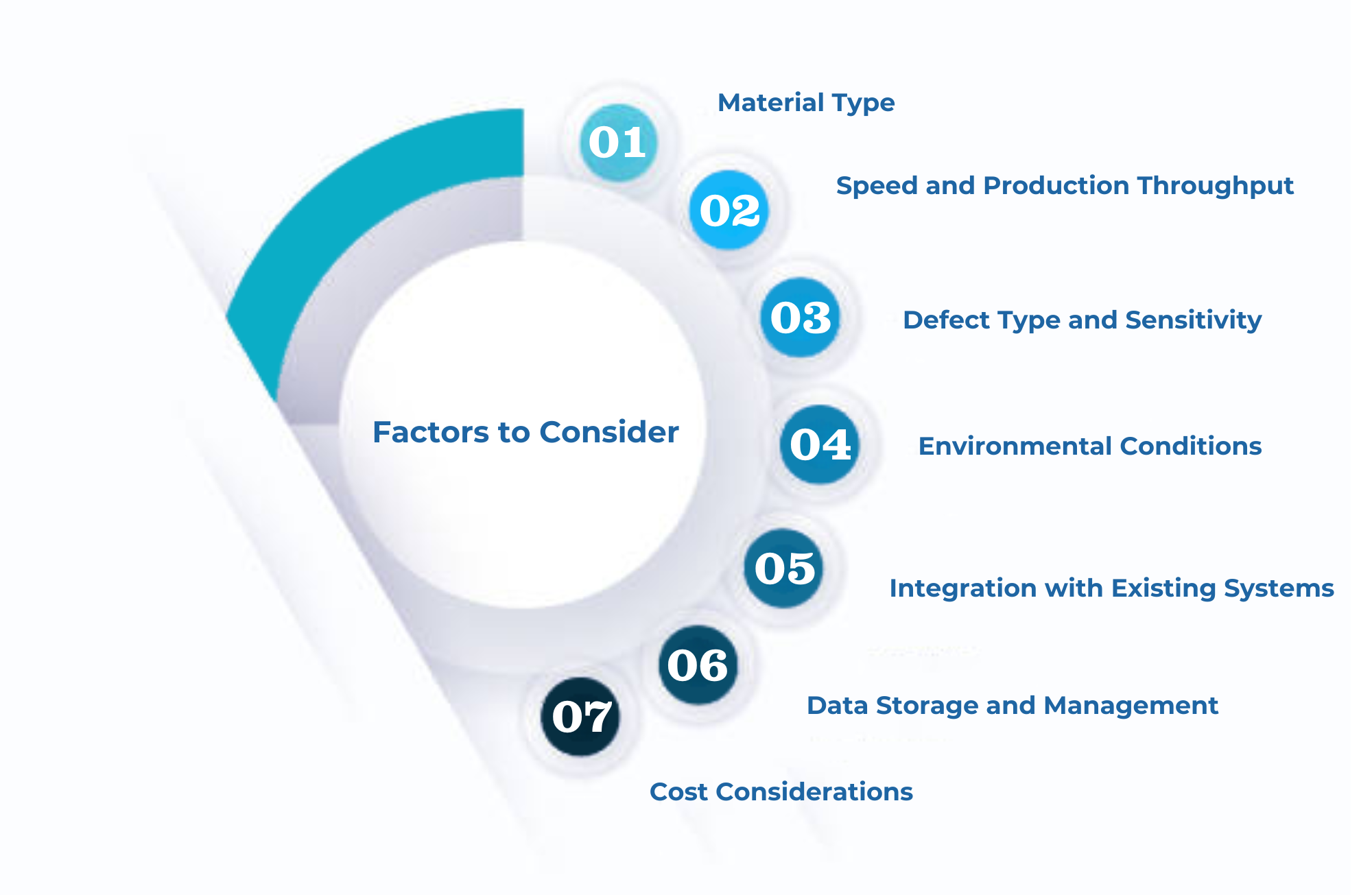Wide and Long Surface Inspection in continuous production line
Published on: Nov 18, 2024

Written by: Soumen das
Wide and Long Surface Inspection in Manufacturing Industries
Surface inspection is an integral process in a wide range of industries, from manufacturing and automotive to electronics and aerospace. It ensures that products meet the desired standards and are free from defects, scratches, dents, or other imperfections. When it comes to long surface inspection, the challenge intensifies due to the scale and complexity of inspecting long, continuous surfaces.
Understanding Long Surface Inspection
Long surface inspection refers to the automated process of detecting surface defects or irregularities on extended materials, such as metal sheets, glass panels, continuous webbing, or large automotive components. The aim is to identify faults like cracks, chips, scratches, surface roughness, and discoloration that could affect the product's functionality, appearance, or durability.
Unlike traditional inspection methods where individual items are inspected one by one, long surface inspection requires analyzing large or continuous surfaces that may stretch for meters or even kilometers. The systems used for these inspections must not only detect anomalies but also process vast amounts of data in real-time.

Key Technologies Used for Long Surface Inspection
To implement an efficient long surface inspection system, several advanced technologies come into play. The choice of technology depends on the type of material being inspected and the type of defects to be identified.
Machine Vision and Cameras One of the most widely used technologies for long surface inspection is machine vision, which uses cameras, high-resolution sensors, and lighting systems to capture detailed images of the surface. These cameras can detect surface defects by comparing the images captured to an ideal model or a Golden Template, and highlight deviations. High-speed cameras are often used to capture surface conditions at production speeds.
Types of cameras used:
- Line scan cameras: Ideal for inspecting long surfaces as they capture images line-by-line rather than area-by-area.
- Area scan cameras: These provide a wider view and are suitable for inspecting large flat surfaces when high resolution is needed.
Laser Scanning and LIDAR (Light Detection and Ranging) Laser scanning and LIDAR technology are employed to map surfaces in high detail. These methods use laser beams to measure the distance to a surface, capturing its contour and texture with extreme precision. The high-resolution data generated can be used to detect even the slightest surface irregularities.
Ultrasonic Testing Ultrasonic testing is a nondestructive method used to inspect materials for internal and surface defects. It can identify flaws such as cracks, voids, and inconsistencies by sending sound waves through the material and measuring how they reflect back. While primarily used for thicker materials, ultrasonic systems can be adapted for long surface inspections.
Infrared Thermography This method is used for detecting subsurface anomalies. When applied to surface inspection, it detects heat variations on the material’s surface that could indicate defects. Infrared thermography is particularly useful for materials that are prone to temperature changes due to stress or defects, such as composite materials in aerospace or automotive parts.
AI and Machine Learning Once the data is captured through these methods, machine learning (ML) and artificial intelligence (AI) come into play. AI algorithms analyze the data, identify patterns, and classify the defects. Over time, AI can improve its ability to detect anomalies by "learning" from the data, making the inspection process increasingly accurate and efficient.
Robotic Arms Robotic arms equipped with inspection tools can be employed to inspect long surfaces in motion. The robotic arm can adjust its position in real-time to inspect large surfaces that may not be static or fixed. These systems are ideal for inspecting items such as car bodies, large panels, or manufacturing rolls.

Factors to Consider Before Implementing Long Surface Inspection
Before jumping into the implementation of a long surface inspection system, there are several factors that you need to consider to ensure that the system will meet your needs effectively and efficiently.
Material Type
The material being inspected will dictate the choice of technology. For example, glass, metal, plastics, and composites all have unique surface characteristics, which means that different inspection systems might be needed for each. Consider whether the inspection system needs to detect scratches, surface roughness, color anomalies, or other types of defects.
Speed and Production Throughput
One of the key challenges in long surface inspection is managing high production speeds. Long surfaces, especially in industries like automotive or steel manufacturing, may need to be inspected while moving at high speeds. The inspection system must be able to process data quickly to keep up with production without slowing down the process. Real-time data processing is essential to avoid delays or bottlenecks.
Defect Type and Sensitivity
Different types of defects require different levels of sensitivity. For instance, detecting microcracks on a metal sheet requires more advanced imaging techniques than identifying color differences in a plastic product. Understanding the types of defects you are targeting is essential when choosing the technology. High-resolution imaging, laser scanning, and AI-driven systems can help identify even the smallest anomalies.
Environmental Conditions
The environment in which the inspection system will operate plays a crucial role in its effectiveness. Harsh environments with dust, moisture, high temperatures, or vibrations may require specialized equipment to ensure accurate readings. In these cases, rugged, industrial-grade cameras, sensors, and scanning systems might be necessary to maintain accuracy.
Integration with Existing Systems
The new inspection system must integrate seamlessly with your existing production and quality control systems. Whether it’s connecting with a central monitoring system or feeding real-time data into your quality management software, ensuring smooth integration is critical for maintaining operational efficiency.
Data Storage and Management
Long surface inspections generate vast amounts of data. Implementing an inspection system without a robust data storage and management plan can quickly overwhelm existing systems. Make sure that your inspection system includes effective data storage and management solutions that can handle the high volume of information generated.
Cost Considerations
The initial investment for a long surface inspection system can be significant, particularly when using advanced technologies like AI, machine vision, and laser scanning. However, the long-term savings resulting from defect detection, reduced manual labor, and improved product quality can make the investment worthwhile. It’s essential to balance the cost of implementation with the potential savings and productivity gains.

Benefits of Implementing Long Surface Inspection
- Increased Accuracy and Precision : Automated systems can detect surface defects far more accurately than manual inspections. This results in fewer missed defects and a more consistent quality of the product.
- Higher Throughput : Automation enables inspections to be done in real-time without slowing down production. This ensures higher throughput without compromising on quality.
- Reduced Human Error : Automated inspection systems significantly reduce the chances of human error, improving consistency and ensuring that even subtle defects are identified.
- Cost Savings : Although the initial investment in a long surface inspection system can be high, the long-term cost savings from reduced scrap, improved product quality, and fewer customer complaints often justify the expense.
- Enhanced Quality Control : With continuous monitoring and real-time anomaly detection, manufacturers can ensure higher standards of quality control, leading to fewer defective products reaching customers.
- Traceability and Reporting Many modern inspection systems come with traceability features that allow you to generate detailed reports and track defect trends over time. This helps in identifying systemic issues and improving manufacturing processes.
Challenges in Long Surface Inspection Implementation
- High Initial Investment : The cost of advanced technologies, such as AI, machine vision, and robotic arms, can be a barrier for some companies. The system must be cost-effective over time to justify the upfront costs.
- Integration with Existing Equipment : Implementing a new inspection system may require changes to existing equipment or workflows, which could lead to initial disruptions or inefficiencies.
- False Positives and Negatives : Automated systems may sometimes flag defects that are not truly issues (false positives), or they might miss subtle defects (false negatives). Fine-tuning the system to reduce these errors can take time.
- Complexity of Setup : Setting up a long surface inspection system can be complex and may require skilled professionals. Proper training and expertise are essential to ensure that the system is configured and calibrated correctly.
- Environmental Factors : Environmental challenges, such as vibrations, ambient light conditions, and temperature fluctuations, can affect the accuracy of surface inspection systems.
Long surface inspection is an essential process for ensuring the quality and integrity of products in various industries. By leveraging advanced technologies like machine vision, laser scanning, and AI, manufacturers can detect defects quickly and accurately, improving quality control and reducing waste. However, implementing an effective inspection system requires careful consideration of factors such as material type, inspection speed, defect sensitivity, and integration with existing systems.
While the implementation of long surface inspection systems can be costly and complex, the long-term benefits—such as higher product quality, reduced human error, and increased throughput—make it a worthwhile investment for many industries. Before moving forward with implementation, it’s important to weigh the challenges, choose the right technology, and ensure that the system is properly integrated and tuned to meet your operational needs. With the right planning and execution, long surface inspection can significantly enhance the efficiency and reliability of your manufacturing processes.

